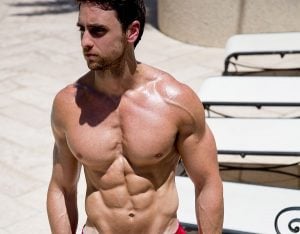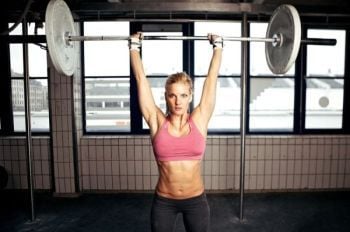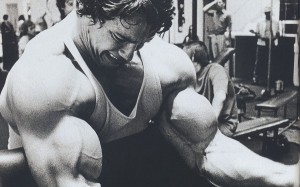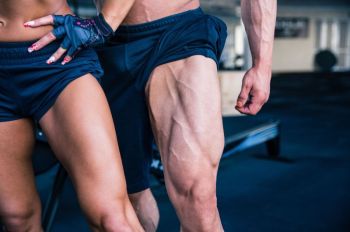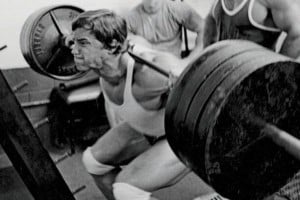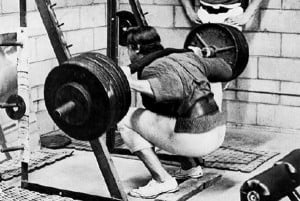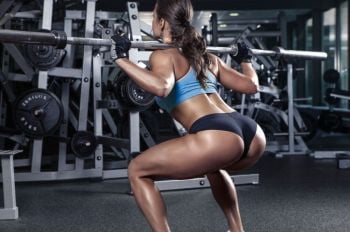Key Takeaways
- CrossFit can absolutely help you get in great shape, and depending on the coach you work with, it’s not as dangerous as some people would have you believe.
- That said, CrossFit isn’t the best way to gain muscle and strength and lose fat, which is why many people get into it in the first place.
- If your primary goal is gaining muscle and strength, getting and staying lean, or improving your cardiovascular endurance, then you should stick with traditional strength or cardio training.
“CrossFit won’t just transform your body,” an acquaintance once told me, “it will change everything—who you are, how you view the world, what you think is possible.”
I’m a big believer in the life-changing power of being fit, but . . . really? I felt like I was being pitched on an MLM, not a workout program.
This type of talk is common in the CrossFit universe, which has enjoyed tremendous success in the last decade. There are over 13,000 CrossFit affiliates (gyms) around the world, and CrossFitters are some of the most passionate fitness folk you’ll ever meet.
But is it everything the true believers claim it to be? Is it really the best way to get fit? Does it really transform mere “working out” into something transcendent?
Or is it just another fad with nothing particularly special to offer other an increased risk of injury and overtraining, as many of its detractors claim?
Well, the long story short is this:
CrossFit can absolutely help you get in great shape, and depending on the coach you work with, it’s not as dangerous as some people would have you believe.
That said, CrossFit is not the best way to gain muscle and strength and lose fat, which is why many people get into it in the first place.
Let’s find out why . . .
Would you rather listen to this article? Click the play button below!
Want to listen to more stuff like this? Check out my podcast!
What Is CrossFit?
CrossFit is a high-intensity exercise program that focuses on performing a variety of strength and aerobic exercises, ranging from push-ups to sprints and clean and jerks.
The exercises are usually combined into “Workouts of the Day,” or “WODs” as the initiated call them, which typically last 5 to 15 minutes. Performance is tracked and ranked to encourage friendly competition and measure progress.
In most WODs, you’ll do one exercise after another with no rest in between for a set number of “rounds” as quickly as possible. In others, you’ll do as many rounds as possible while racing against the clock.
For instance, here’s a CrossFit workout called the “Helen”:
Do 3 rounds of the following as quickly as possible:
400-meter Run
21 Kettlebell Swings
12 Pull-Ups
Here’s the “Fran”:
Do the following as quickly as possible:
Three rounds of 21, 15, and 9 reps of:
95-pound Thruster
Pull-Ups
And here’s the “Murph”:
Do the following as fast as possible:
1-mile Run
100 Pull-Ups
200 Push-Ups
300 Squats
1-mile Run
You can split up the strength exercises however you like, but you have to start and finish the workout with a 1-mile run.
People pay buku bucks to do these workouts, too, because your average CrossFit gym, or “box” as it’s called, costs anywhere from $100 to $300 per month. Here’s what they normally look like:
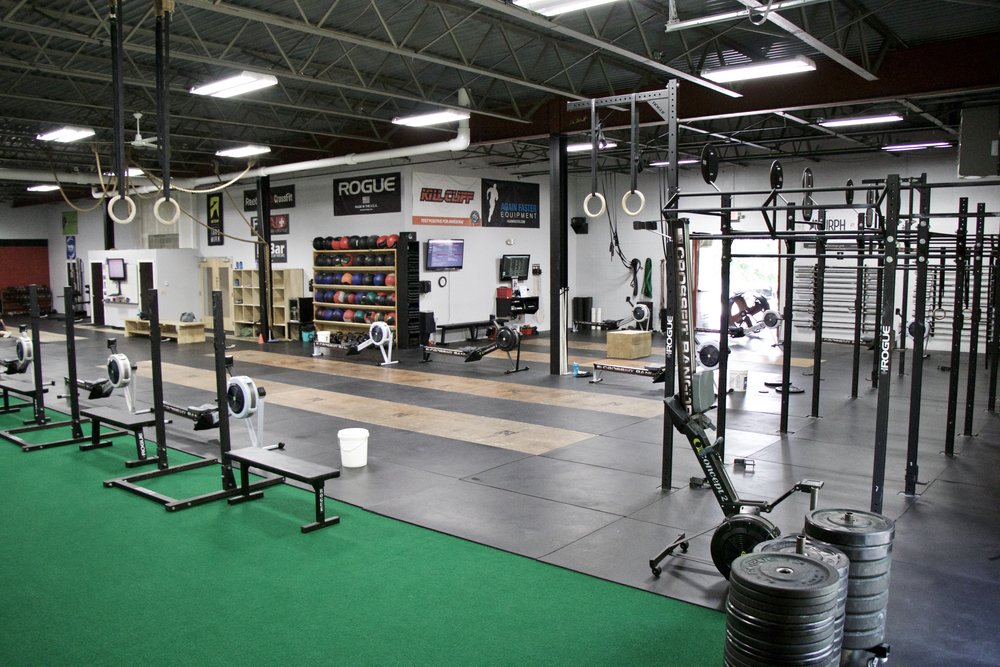
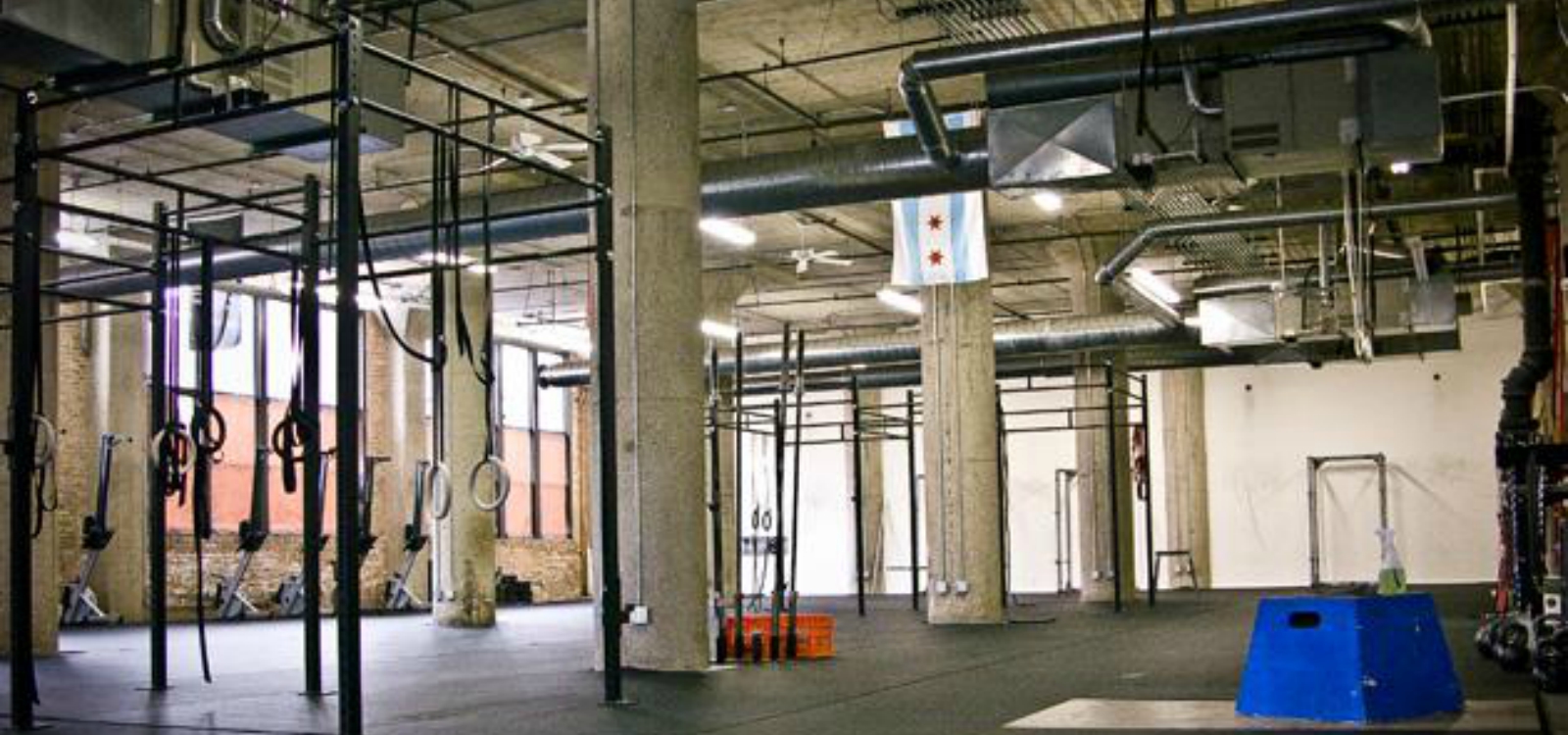
As you can see, they’re well equipped, with squat racks, dumbbells, medicine balls, kettlebells, gymnastics bars, Olympic weightlifting platforms, ropes, rowing machines, and other goodies for exercises like weighted sled pushes, glute-ham raises, and more.
This is one of the great things about CrossFit: most of the gyms have everything you need to do proper strength training workouts.
What you do with it all is vitally important, of course, but step one is having the right hardware (and enough of it), and most CrossFit gyms are standouts in this regard.
CrossFit’s meteoric rise can be attributed to a lot more than cutesy-named workouts and well-stocked gyms, though. It’s the culture that’s made it so popular. Here’s what I’m talking about:
Brilliant marketing, that’s for sure, but how do these gushing testimonials match up with reality? What does science have to say?
What’s Good About CrossFit?
CrossFit gets a lot of grief for being an expensive way to learn bad form, get hurt, and lose all your gainz, and we’ll get to these points and more soon, but first, let’s look at the positive aspects of it.
CrossFit tells you exactly what to do every day.
Here’s how most people work out:
They have no overarching workout plan and show up at the gym a few (usually different) days per week to train whatever is most enticing/least painful in the moment by doing a number of randomly chosen exercises for a number of randomly chosen sets and reps until they run out of time or get bored, and then they leave.
This may qualify as “exercise” and is better than nothing, but it certainly isn’t “training,” which requires logical structure and orderly progression, and won’t produce much in the way of results.
When you show up to a CrossFit class, though, the instructor will tell you exactly what to do, how to do it, and when to stop. If the instructor also knows a thing or two about programming, this means every major muscle group in your body will get its fair share of punishment.
CrossFit instructors can also customize workouts to fit your abilities and needs. If your upper body strength sucks, for example, they can help you swap barbell bench pressing for something you can do better, like push-ups or dumbbell pressing. Suck at running? You can do a walk/run combo, or maybe a different kind of cardio like rowing.
Most CrossFit gyms also keep track of how you’re progressing in your workouts, which is essential for avoiding plateaus in strength and weight gain.
CrossFit revolves around barbell training.
If you’re familiar with my work, you’ll know that I’m a big fan of barbell training and compound exercises in general.
As I often say, your number one goal as a natural weightlifter should be increasing your whole-body strength, and the best way to do that is to focus on barbell exercises that involve multiple joints and muscle groups, like the squat, bench press, overhead press, and deadlift.
Many people don’t prioritize or even do these types of exercises though, and that’s one of the major reasons so many of them are stuck in a rut.
Well, one of the first things you learn when you join a CrossFit gym is how to squat, bench press, overhead press, and deadlift (and hopefully with proper form), and that’s the right way to introduce yourself to weightlifting.
CrossFit pushes you to work harder than you might on your own.
Most people hate being uncomfortable, and the more uncomfortable they are, the more they want to immediately stop whatever is causing them discomfort.
That mentality doesn’t fly in CrossFit.
Although it can be taken to dangerous extremes, the “no pain, no gain” attitude of CrossFit is one of the reasons it works.
When you do a CrossFit workout, expect to be pushed to go heavier, harder, faster, or longer, and when you know your name is going up on a scoreboard, you’ll probably want to give it everything you’ve got.
Not everyone needs or wants this kind of hyper-competitive environment, but for those who tend to struggle to stay motivated to work out, it can help them stay on track.
CrossFit encourages you to take fitness seriously.
When you join a CrossFit gym, you’re going to be surrounded by a lot of people who genuinely love fitness.
They’re not only going to put a lot more time into exercise than the average person, they’re also going to eat better, supplement better, and have fewer unhealthy habits like smoking, drinking, and under-sleeping.
As the old cliche goes, you’re the average of the five people you spend the most time around, so when you spend enough time around these ultra-fit types of people, some of their drive and dedication will inevitably wear off on you.
What’s Bad About CrossFit?
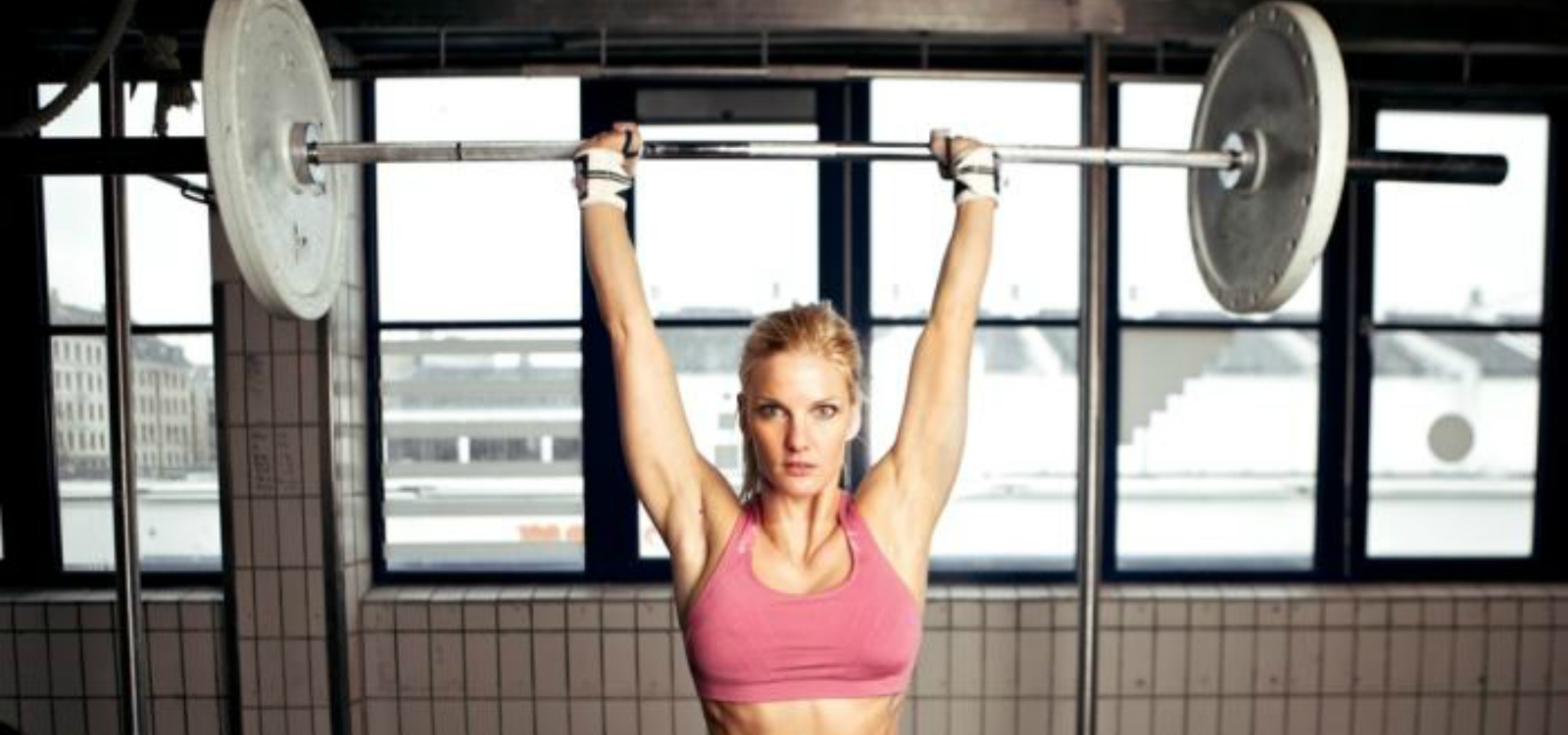
Compared to the overwhelming number of nonsensical workout programs out there, you can do far worse than CrossFit.
If you want to be kinda strong and kinda good at Olympic lifts with decent endurance and flexibility, and if a class environment is important to you, then it might be perfect for you.
If you want to lose fat, build muscle, and get healthy as quickly and efficiently as possible, though, it’s not the best way to go.
Here’s why.
CrossFit Isn’t the Most Efficient Way to Get Fit
CrossFit marketing is laden with buzzwords like . . .
- Functional fitness
- General fitness training
- Full-body workout
- Metabolic conditioning (“MetCon”)
- General physical preparedness (“GPP”)
The idea is that performing a wide variety of exercises is the best way to achieve overall fitness, which is the best way to have an aesthetic physique.
Well, the Oxford English Dictionary defines fitness as “the condition of being physically fit and healthy.” And fit is defined as “in good health, because of regular physical exercise.”
Using these dictionary definitions, we can measure our fitness level in several ways:
- By testing our muscular strength.
- By testing our cardiovascular conditioning.
- By testing our body composition.
- By testing our flexibility.
- By testing our metabolic health.
Moreover, as we get fitter . . .
- We get stronger.
- We develop better cardiovascular endurance.
- We become more muscular.
- We become more flexible.
- We improve our body’s ability to use food for fueling and regenerating itself.
Well, in CrossFit lingo, fitness has a different definition—a short-sighted one that Glassman invented, and that he claims is the first “meaningful, measurable way” to define the word.
Here it is: “Increased work capacity across broad time and modal domains.”
So basically, according to Glassman, you’re as fit as you can do CrossFit. Clever and convenient. But silly.
You’re not as fit as you can do CrossFit.
Case in point: watch some CrossFit videos online or head into a CrossFit gym and you’ll see a lot of weak, overweight, inflexible people roleplaying as Spartans as they do kipping (fake, easy, cheating) pull-ups and finish WODs with a quick visit to “Uncle Pukie’s.” These people are not fit.
Now, I don’t say that to rag on them for not being in great shape. I respect anyone that puts in work to improve their fitness, regardless of their current circumstances. But I am ragging on the unfit CrossFit snobs that think that because we’re not a part of their “WODSQUAD,” we’re physically inferior in some way.
So wait . . . I can out-lift, out-run, and out-stretch you, and I’m bigger and leaner than you . . . but you’re elite because you can bumble your way through spasms resembling Olympic lifts and do air squats until you toss your Paleo cookies?

Therefore, I’d like to make a simple proposition:
An activity is as beneficial to your fitness as it builds strength and aerobic endurance, and improves body composition, flexibility, and metabolic health.
How does CrossFit measure up against that definition?
CrossFit and Muscle and Strength Gain and Cardiovascular Endurance
It’s often claimed that CrossFit workouts are the best way to simultaneously gain muscle and strength and increase endurance.
This theory seems plausible at first glance because of the nature of the training—it’s essentially high-intensity interval weightlifting and cardiovascular training—but it quickly unravels when you consult the scientific literature.
Unfortunately, by trying to do everything at the same time, you end up with subpar results across the board.
This has been demonstrated in a number of studies. For example, researchers from RMIT University worked with well-trained athletes in 2009 and found that “combining resistance exercise and cardio in the same session may disrupt genes for anabolism.” They also found that cardio before the resistance training suppressed anabolic hormones such as IGF–1 and MGF, and cardio after resistance training increased muscle tissue breakdown.
In layman’s terms, combining endurance and resistance training appears to send “mixed signals” to the muscles and impairs their ability to adapt to either, and is suboptimal for maximizing muscle and strength gains and aerobic fitness.
Several other studies have come to the same conclusion: Training for both cardiovascular endurance and muscle strength simultaneously impairs your gains on both fronts, and this seems to be especially true with running.
Does that mean that CrossFit won’t improve your strength and endurance, though? No, of course not. But if you want to get big and strong or improve your aerobic capacity as efficiently as possible, science says that CrossFit isn’t the best way to do either.
Therefore, it’s no surprise that your average CrossFitters aren’t particularly big, strong, or cardiovascularly fit. In fact, the only CrossFitters I’ve known that had exceptional strength, size, or cardio were doing traditional weightlifting and cardio training in addition to CrossFit.
You’ll also see outstanding physiques in the CrossFit Games (their Super Bowl), which implies that CrossFit can indeed deliver the goods. I mean, who wouldn’t want to look like one of these guys?
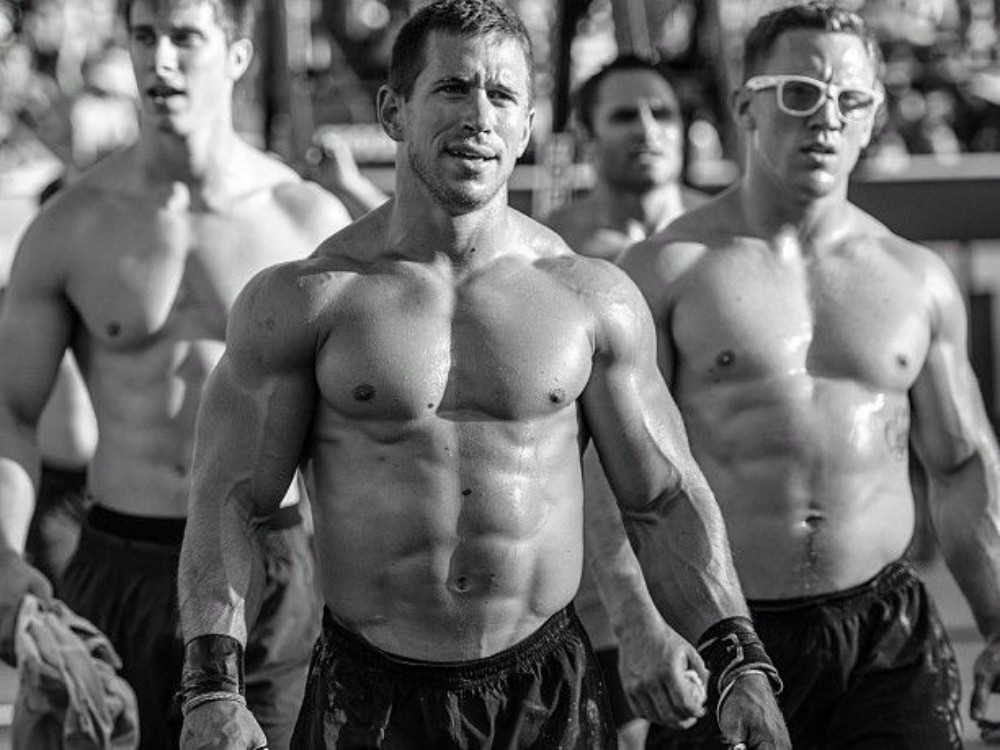
Or this gal?
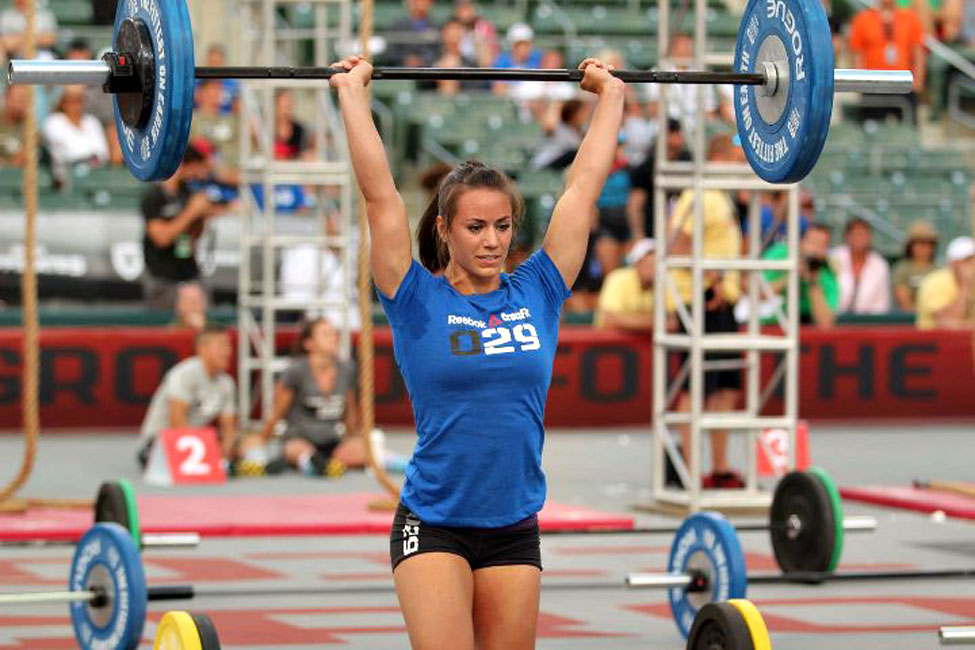
Keep in mind, however, that CrossFit is a professional sport, and that means that vitamin S will be in abundant supply. (Cynical, I know, but don’t think for a second that you or I or anyone we know could naturally achieve the combined levels of strength, muscularity, and leanness seen in the Games.)
What’s the best way to get fit, then? To gain muscle and strength and improve your cardio?
Well, research shows that the best way to build muscle and strength and improve aerobic endurance is to train them separately.
In the extreme, this means focusing exclusively on just one for extended periods of time (no cardio while “bulking,” for example). Below that is doing your resistance training and cardiovascular workouts on different days. And below that is separating your resistance training and cardiovascular workouts by at least several hours.
CrossFit and Fat Loss
Many people think that, because CrossFit workouts are so challenging, they must be great for burning a ton of calories and fat.
Not really.
While CrossFit workouts are high-intensity, they’re also short, and that’s why women can expect to burn 60 to 120 calories per CrossFit workout, and men can expect to burn 110 to 170 calories per session.
While that may be impressive given the duration of the workouts, you can burn the same amount of calories with about 30 to 40 minutes of walking. It’s also rather negligible in the greater context of weight loss because a pound of fat contains about 3,500 calories (you’re going to want to burn quite a bit more energy every day through physical activity if you want to lose fat efficiently).
CrossFit Makes It Easier to Overtrain
Many CrossFitters pride themselves on how “hardcore” their workouts are and how much they can punish themselves before puking their guts out and collapsing from exhaustion.
That may sound cool in theory and certainly requires above-average levels of physical and mental toughness, but it’s also the fast track to overtraining, which can lead to serious health problems including general fatigue, depression, restlessness, loss of appetite, and more.
A rather extreme example of this is a man named Makimba Mimms who was awarded $300,000 in damages from a local CrossFit gym and his trainer for injuries he sustained during a CrossFit workout in 2005. Those injuries included rhabdomyolysis, a condition in which severely and rapidly damaged muscle tissue is released into the bloodstream, which can lead to kidney failure. The Workout of the Day, or “WOD,” that almost killed Mimms was renamed the “Makimba” and categorized as a children’s workout. Har har har.
You don’t have to be a wimpy newbie to suffer rhabdo, either. In January 2011, 13 football players at the University of Iowa were hospitalized with rhabdo after doing a workout that included 100 squats with 50% of their one-rep max. It wasn’t a CrossFit workout, but was similar in that it had them performing compound lifts for high reps and under extreme fatigue.
So, here’s the bottom line:
If you’re training to complete physical exhaustion multiple times per week, and especially in resistance training workouts, you’re going to end up overtraining. It’s only a matter of time.
CrossFit Makes It Easier to Get Hurt

One of the first things I noticed about people I knew doing CrossFit was almost all of them had gotten hurt since starting. Sprains, joint injuries, pulled muscles, even torn ligaments were common.
This isn’t surprising.
Research shows that for every 1,000 hours of CrossFit, there are around 2 to 4 injuries. That’s similar to Olympic weightlifting and powerlifting, but still about 2 to 4 times higher than bodybuilding (1 injury per 1,000 hours).
Your risk of injury can be much higher than this depending on your coach and programming. For instance, if you’re told to do compound exercises like the deadlift, squat, or snatch, you’d better know what you’re doing. If your coach hasn’t taught you or doesn’t insist on proper form or pushes you to go heavier than you’re comfortable with or to absolute muscle failure (which is common in CrossFit workouts), the likelihood of injury goes way up.
A good coach can only do so much, too, because performing compound exercises (and especially heavy compound exercises) when you’re fatigued is a fantastic way to get hurt. As fatigue sets in, form and proprioception (awareness of the position of your body) suffer, which sets you up for injury.
This is one of the reasons why the American College of Sports Medicine recommends at least 3 minutes of rest in between heavy weightlifting sets (1 to 6 reps).
Here’s how Dr. Stuart McGill, a professor of spine biomechanics, explains it:
“The problem has to do with fatigue and going to failure. Some exercises are conducive to this and others are not.” [McGill puts Olympic lifts in the “not” category.]
“Repeating movements where form is compromised with fatigue really does not fit the philosophy of Olympic lifting to reduce injury risk and enhance performance.”
So, while you’re not guaranteed to get hurt doing CrossFit, you’re at a higher risk of injury if you follow the regular protocols.
Should You Do CrossFit?
This depends on your goals.
If you’re looking to get fitter and have some fun with a group of like-minded people, and if you have a good coach and know how to avoid overtraining and injury, then CrossFit isn’t a bad choice.
But if you’re looking to gain muscle and strength, lose fat, or increase your aerobic fitness as quickly and safely as possible, then CrossFit isn’t for you.
You’ll be better served by a more traditional approach of strength and/or cardiovascular training.
The Bottom Line on CrossFit
On the whole, I think CrossFit has done a lot more good than bad.
It’s motivated millions of people to start working out, introduced them to heavy barbell training, and helped them lose fat, build muscle, and get healthier.
On the other hand, it has significant drawbacks and isn’t the safest or most effective way to do any of those things.
So, if you’re looking for something more akin to a sport than an optimized training regimen, and if you like competition and want to see just how hard you can push the envelope in your workouts, then you’ll probably enjoy CrossFit.
If, however, you’re more interested in gaining muscle and strength, getting and staying lean, or improving your aerobic fitness without having to kill yourself in the gym, then you should stick with traditional strength and cardio training.
Looking for a Workout Routine?
Chest Workouts
The Perfect Chest Workout Routine for More Hypertrophy, Power, and Strength
How to Get a Bigger and Stronger Chest in Just 30 Days
The Ultimate Chest Workout
This Is The Last Upper Body Workout You’ll Ever Need
Shoulder Workouts
This Is the Perfect Shoulder Workout Routine for Big and Strong Delts
How to Get Bigger and Stronger Shoulders in Just 30 Days
The Ultimate Shoulder Workout
4 Rotator Cuff Exercises That You Should Be Doing (and Why)
Arm Workouts
How to Get Bigger and Stronger Biceps in Just 30 Days
How to Get Bigger and Stronger Triceps in Just 30 Days
The Ultimate Arms Workout
Back Workouts
How to Get a Bigger and Stronger Back in Just 30 Days
The Ultimate Back Workout
Leg Workouts
How to Get Bigger and Stronger Legs in Just 30 Days
This Is The Last Lower Body Workout You’ll Ever Need
The Ultimate Legs Workout
Butt Workouts
How to Get a Bigger and Rounder Butt in Just 30 Days
The Best Butt Exercises for Building Head-Turning Glutes

What’s your take on CrossFit? Have anything else to share? Let me know in the comments below!
Scientific References +
- Kraemer WJ, Adams K, Cafarelli E, et al. American College of Sports Medicine position stand. Progression models in resistance training for healthy adults. Med Sci Sports Exerc. 2002;34(2):364-380. doi:10.1097/00005768-200202000-00027
- Lattanzio PJ, Petrella RJ, Sproule JR, Fowler PJ. Effects of fatigue on knee proprioception. Clin J Sport Med. 1997;7(1):22-27. http://www.ncbi.nlm.nih.gov/pubmed/9117521. Accessed September 27, 2019.
- Vakos JP, Nitz AJ, Threlkeld AJ, Shapiro R, Horn T. Electromyographic activity of selected trunk and hip muscles during a squat lift. Effect of varying the lumbar posture. Spine (Phila Pa 1976). 1994;19(6):687-695. doi:10.1097/00007632-199403001-00008
- Keogh JWL, Winwood PW. The Epidemiology of Injuries Across the Weight-Training Sports. Sport Med. 2017;47(3):479-501. doi:10.1007/s40279-016-0575-0
- WISHNOFSKY M. Caloric equivalents of gained or lost weight. Am J Clin Nutr. 6(5):542-546. doi:10.1093/ajcn/6.5.542
- Wilkin LD, Cheryl A, Haddock BL. Energy expenditure comparison between walking and running in average fitness individuals. J strength Cond Res. 2012;26(4):1039-1044. doi:10.1519/JSC.0b013e31822e592c
- Fyfe JJ, Bartlett JD, Hanson ED, Stepto NK, Bishop DJ. Endurance training intensity does not mediate interference to maximal lower-body strength gain during short-term concurrent training. Front Physiol. 2016;7(NOV). doi:10.3389/fphys.2016.00487
- Wilson JM, Marin PJ, Rhea MR, Wilson SMC, Loenneke JP, Anderson JC. Concurrent training: a meta-analysis examining interference of aerobic and resistance exercises. J strength Cond Res. 2012;26(8):2293-2307. doi:10.1519/JSC.0b013e31823a3e2d
- Androulakis-Korakakis P, Langdown L, Lewis A, et al. Effects of Exercise Modality During Additional “High-Intensity Interval Training” on Aerobic Fitness and Strength in Powerlifting and Strongman Athletes. J strength Cond Res. 2018;32(2):450-457. doi:10.1519/JSC.0000000000001809
- Häkkinen K, Alen M, Kraemer WJ, et al. Neuromuscular adaptations during concurrent strength and endurance training versus strength training. Eur J Appl Physiol. 2003;89(1):42-52. doi:10.1007/s00421-002-0751-9
- Leveritt M, Abernethy PJ, Barry BK, Logan P a. Concurrent Strength and A Review. Sport Med. 1999;28(6):413-427. https://www.ncbi.nlm.nih.gov/pubmed/10623984. Accessed September 27, 2019.
- Nader GA. Concurrent strength and endurance training: from molecules to man. Med Sci Sports Exerc. 2006;38(11):1965-1970. doi:10.1249/01.mss.0000233795.39282.33
- Hawley JA. Molecular responses to strength and endurance training: are they incompatible? Appl Physiol Nutr Metab. 2009;34(3):355-361. doi:10.1139/H09-023


